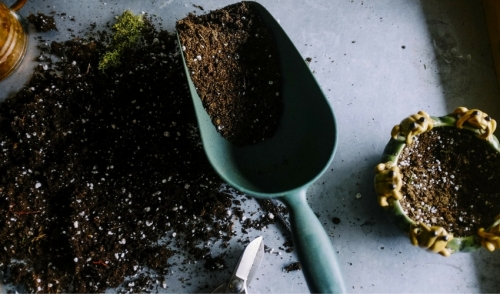
Test Your Soil's pH Level
Testing pH is essential to properly analyze your soil, and understanding soil chemistry can help gardeners and farmers of any level – from backyard hobby gardeners to commercial agricultural industries – choose the best plants, fertilizers, and amendments for ideal growth and healthy, luxuriant crops.
What Affects Soil pH
Your soil's pH – its overall acidity level – will depend on a number of factors, including:
- Soil composition (sand, clay, rock types, drainage, etc.)
- Climate, including ambient moisture and precipitation
- Insect or animal excretions
- Crops and vegetation, including crop rotation if applicable
- Decaying organic material, compost, etc.
pH ranges from 0-14, with 7 indicating a neutral soil, lower numbers indicating more acidic soil, and higher numbers indicating more alkaline soil. Different plants perform well at different pH levels, though extreme levels are not desirable for any healthy growth.
To Test Your Soil's pH
There are several ways to test your soil's pH, and which method you choose depends on the time, budget, and resources you have available as well as how precise you would like the result. From the most general methods to the most precise and accurate, popular ways to test soil pH include:
- Cabbage Juice: Boil red cabbage in distilled water until the water turns a violet color. Pour the water into several cups, straining out the remaining cabbage, and add several spoonfuls of soil to each cup – choosing soil samples from different parts of the garden for more comprehensive results. If the water turns pink, the soil is acidic, but if it turns blue or green, it is alkaline. This is not a strongly precise pH testing method but does give general results that can be suitable for basic adjustments or casual plans. This is an inexpensive, easy testing technique.
- Test Kits: Purchase a soil pH test kit from a garden center. Kits come with detailed instructions, a test solution, and a color chart for reading the pH results. Follow the directions closely, and compare the results of your test to the color chart to determine your soil's pH. This gives a more precise, numerical result than cabbage juice and kits only cost a few dollars, but there is still room for error as the color of your solution may not match the color chart exactly.
- Meter Tests: Purchase a pH test meter to test your soil. These meters typically have probes that are inserted into the soil, and the meter will read the pH within a few moments. This is a very fast and accurate way to measure soil pH, but the meters can be expensive. The most expensive meters may also give additional measurements, such as soil moisture and sunlight levels, that can be useful. Meters can be reused, making them useful for more active gardeners or anyone with multiple garden beds or fields to test.
- Testing Centers: For the most accurate pH results, send a soil sample for testing to your local extension office or university that may offer the service. You will receive a detailed report about your soil's condition, and while the test is not usually expensive, it can take some time to receive the results, so that delay must be factored into any planting or soil conditioning plans.
Once you know your soil's pH level, you can better select plants and crops that will thrive in that soil, or you can take steps to adjust the soil's pH with different fertilizers, amendment treatments, or other conditioning to get it to a healthy level for the plants you want. But the testing is the first step!
